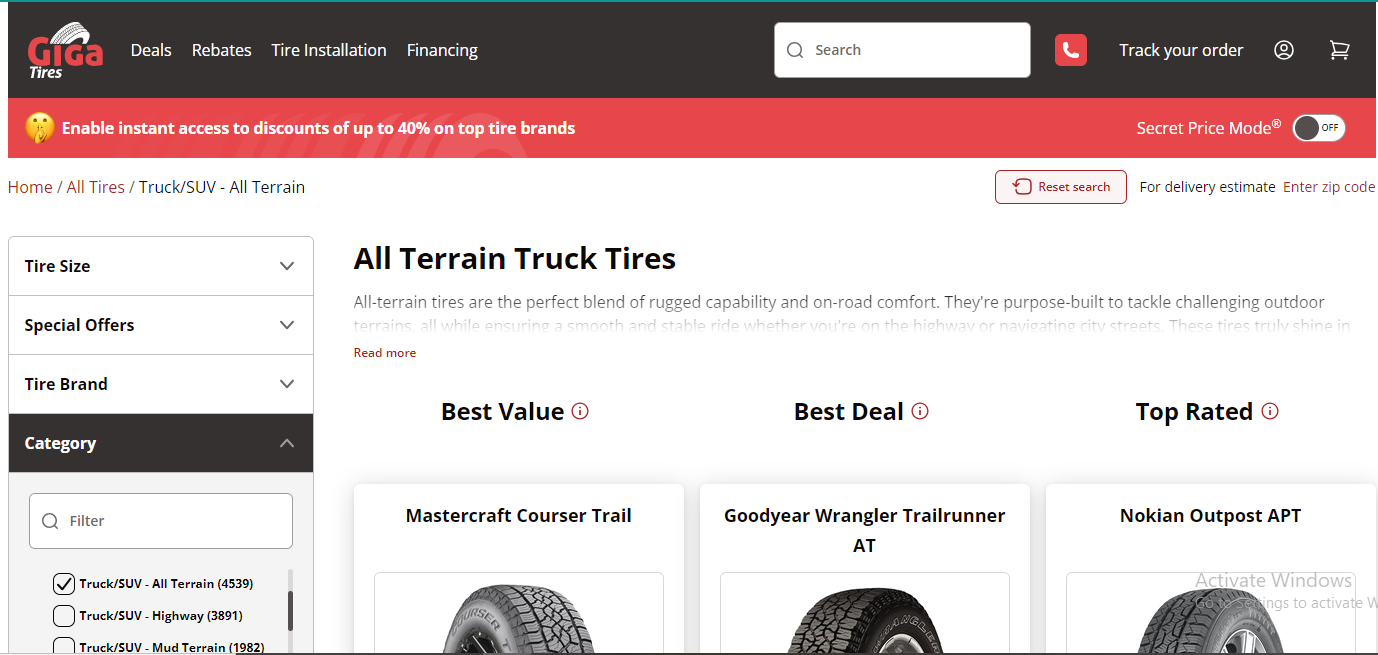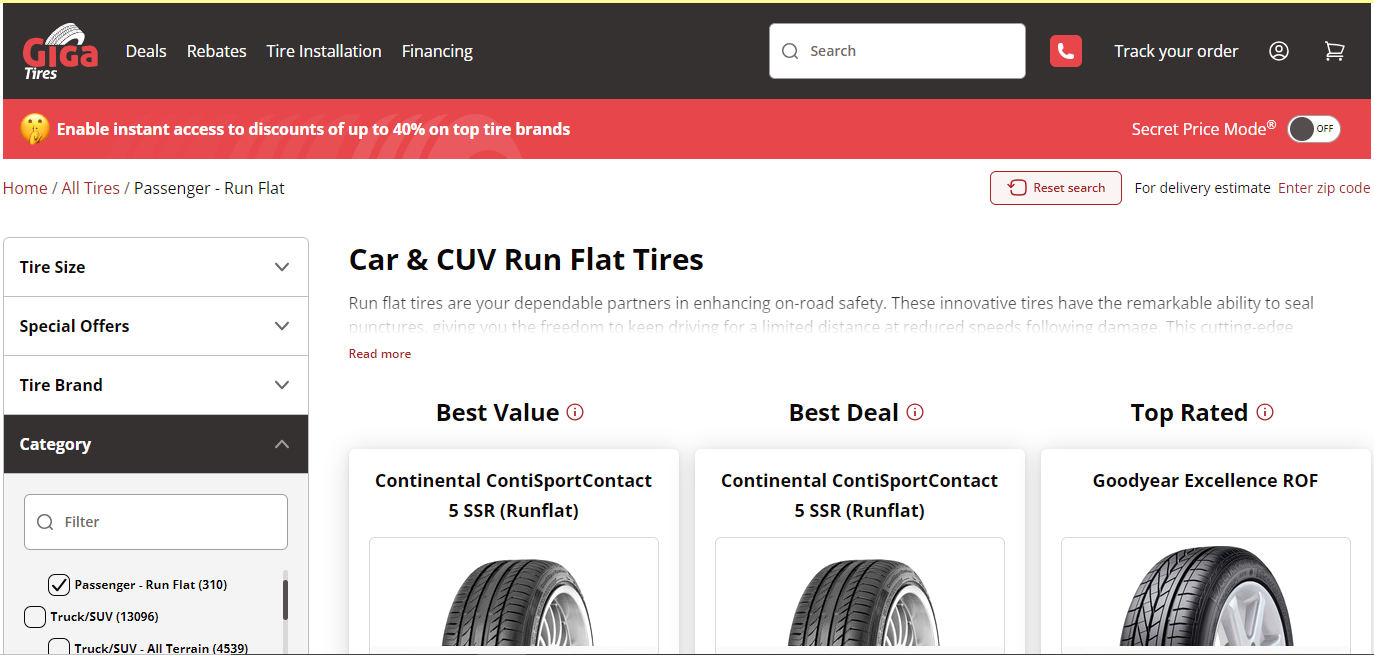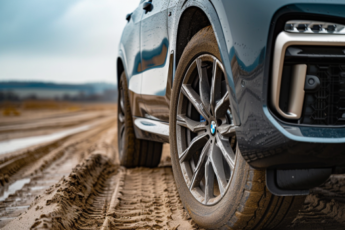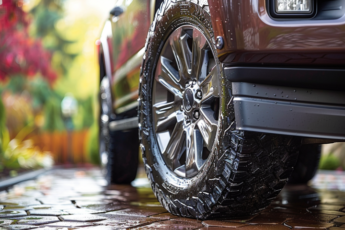Last Updated on 4 weeks
Understanding the Importance of the U.S. Military Tires
T tires are often relegated to the background and underestimated in their significance; they are the unsung workhorses of global military operations. These seemingly simple rubber rings play a critical, yet frequently overlooked, role in ensuring military mobility. Their performance directly impacts the effectiveness and success of armed forces across diverse situations, both on and off the battlefield. This article delves into the crucial Importance of tires in military operations, exploring the various factors that make them indispensable cogs in the machine of modern warfare.
Factors That Influence Tire Choice
Delve into the various factors crucial in determining the right tire for your vehicle. From climate and driving conditions to vehicle type and personal preferences, understanding these influences ensures you make an informed and optimal choice.
- Terrain Versatility: Military operations are conducted across diverse terrains, from rugged mountains to deserts and urban landscapes. Tires must be versatile enough to handle various conditions and provide traction and control.
- Load-Bearing Capacity: Military vehicles often carry heavy loads, including personnel, equipment, and supplies. Tires need to support these loads without compromising performance.
- Durability and Resilience: Tires are exposed to threats like sharp debris and enemy fire in hostile environments. They must be durable and resistant to punctures, ensuring continued mobility even in adverse situations.
Balancing Off-Road Capability and On-Road Performance
Discover the art of balancing off-road capability with on-road performance when selecting tires. This section explores how to choose tires that excel in rugged terrain and everyday driving, ensuring a versatile and capable driving experience.
- Off-Road Capability: Military operations frequently occur in off-road environments, where conventional vehicles might struggle. Specialized off-road tires are designed with deep treads and reinforced sidewalls to navigate through mud, sand, and rocky terrain.
- On-Road Performance: While off-road capability is crucial, military vehicles often need to transition smoothly onto paved roads for logistical reasons. Tires must offer adequate on-road performance to maintain speed and control.
Common Tire Brands
Get acquainted with some of the market’s most well-known and trusted tire brands. Understanding their reputations and specialties can help you make informed decisions when choosing tires for your vehicle.
- Goodyear: A Trusted Name on the Battlefield: Goodyear has a long history of supplying tires to the military. Their products are known for their reliability and performance in challenging conditions.
- Michelin: Providing Versatile Solutions for Military Vehicles: Michelin offers a range of tires designed for military applications, focusing on versatility and durability.
- BFGoodrich: All-Terrain Specialists: BFGoodrich tires are renowned for their all-terrain capabilities, making them a popular choice for military vehicles.
Tire Types
Explore the diverse range of tire types available, from all-season and performance tires to off-road and winter variants. Understanding the characteristics and suitability of different tire types can help you select the perfect set for your specific driving needs and conditions.
- All-Terrain Tires: The Versatile Choice: All-terrain tires are designed to excel in various conditions, striking a balance between on-road and off-road performance. They are the workhorses of military mobility.
- Mud-Terrain Tires: Navigating Tough Conditions: Mud-terrain tires feature deep, aggressive tread patterns that provide excellent traction in muddy and challenging terrains.
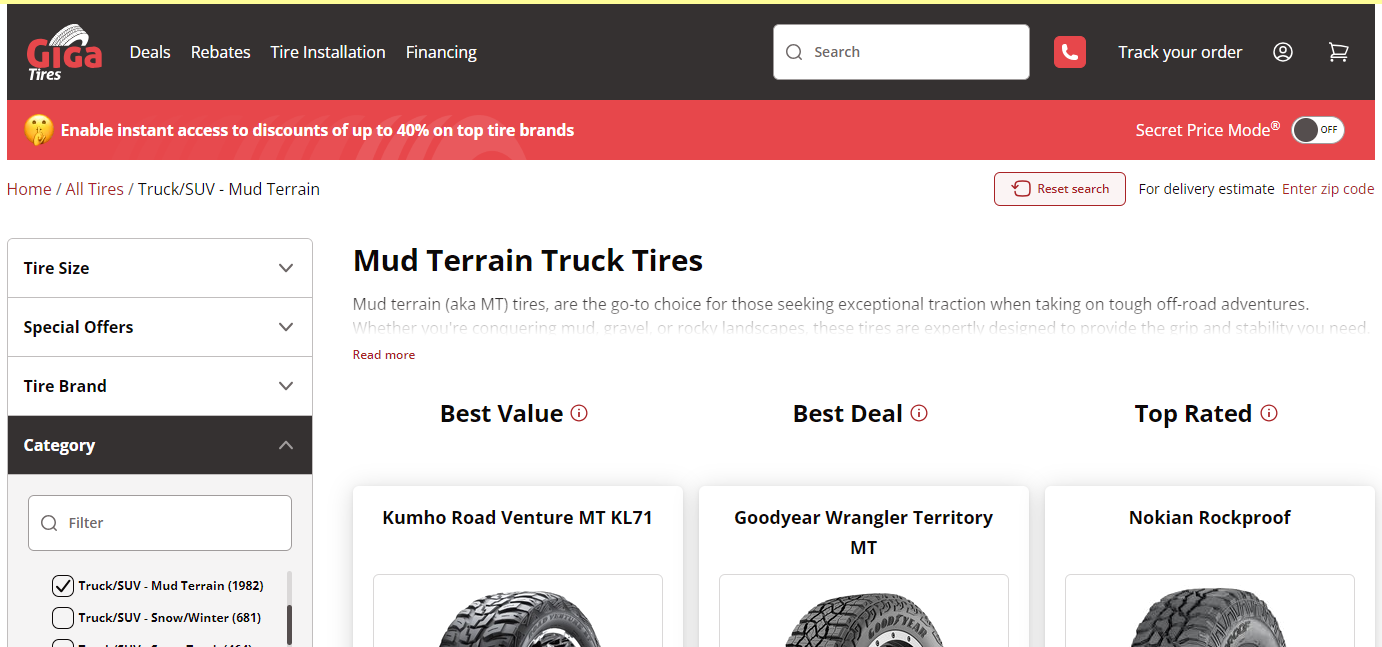
- Run-Flat Tires: Ensuring Mobility in Combat: Run-flat tires are engineered to allow vehicles to continue moving even after sustaining punctures, enhancing the safety and effectiveness of military convoys.
Tire Selection Criteria
In military operations, tire selection is a critical decision that can significantly impact mission success and personnel safety. Military vehicles are subjected to various environmental and operational challenges, making it imperative to consider the factors influencing tire choice carefully. This article delves into the critical tire selection criteria, precisely balancing off-road capability and on-road performance.
Terrain Versatility
One of the foremost considerations when choosing military tires is terrain versatility. Military vehicles must traverse various landscapes, ranging from rugged off-road environments to smooth, paved roads. The selected tires need to perform well in these diverse conditions.
- Off-Road Capability: Military operations often occur in remote and challenging terrains where conventional vehicles may struggle to maintain traction. Tires with excellent off-road capability are equipped with deep treads and reinforced sidewalls to tackle mud, sand, rocks, and other obstacles. These features enable military vehicles to access remote locations and navigate complex terrains.
- On-Road Performance: While off-road capability is crucial, military vehicles must transition seamlessly to on-road conditions for transportation and logistical purposes. Tires should provide adequate on-road performance, including stability, handling, and braking, to ensure safety and efficiency during highway travel.
Load-Bearing Capacity
Military vehicles frequently transport heavy loads, including troops, equipment, and supplies. Therefore, tire choice must account for load-bearing capacity. Insufficient load capacity can lead to premature tire wear, decreased performance, and potential safety hazards.
- Load Rating: Tires are classified with load ratings that indicate their capacity to bear weight. Military tire selection must align with the weight requirements of the specific vehicle and mission. Overloading tires can result in structural damage and compromise overall vehicle performance.
Durability and Resilience
Military tires are exposed to various hazards in combat zones, including sharp debris, potential punctures, and even enemy fire. Consequently, durability and resilience are paramount considerations.
- Puncture Resistance: Military tires often feature advanced materials and construction techniques to enhance puncture resistance. Self-sealing tires, for example, have a unique design that automatically seals punctures, allowing the vehicle to continue operating without interruption.
- Reinforced Sidewalls: Tires designed for military use may incorporate reinforced sidewalls to protect against impacts and abrasions. These enhancements ensure that tires remain functional even in the face of external threats.
Climate and Environmental Conditions
Different regions and climates pose varying challenges to military tire performance. Extremely hot or cold environments and wet or arid conditions can affect tire performance and longevity.
Climate Adaptation: Tire selection should consider the operational theater’s climate and environmental conditions. Specialized tires may be required for extreme temperatures, high humidity, or areas prone to flooding.
Common Tire Brands
Regarding equipping military vehicles with reliable and high-performance tires, several tire brands have earned a solid reputation for their commitment to durability, innovation, and adaptability in challenging environments. This article explores three common tire brands that have become trusted names on the battlefield: Goodyear, Michelin, and BFGoodrich.
Goodyear: A Trusted Name on the Battlefield
Goodyear has been a stalwart supplier of tires to various branches of the U.S. military for decades. Their tires are known for their rugged construction and ability to withstand the demands of military operations. Here are some critical points about Goodyear’s contributions to military mobility:
- Heritage of Excellence: Goodyear has a long history of providing tires for military vehicles. Their expertise in engineering tires for challenging conditions makes them a reliable choice.
- Durability and Puncture Resistance: Goodyear’s military tires are engineered for durability and puncture resistance. They are designed to withstand harsh terrains and resist damage from sharp objects and debris.
- Specialized Tread Patterns: Goodyear develops technical tread patterns tailored to military applications, ensuring superior traction and control on various surfaces.
- Run-Flat Technology: Many Goodyear military tires incorporate run-flat technology, allowing vehicles to continue operating even after sustaining punctures.
Michelin: Providing Versatile Solutions for Military Vehicles
Michelin, a renowned tire manufacturer globally, extends its expertise to the military sector. Michelin’s military tires are designed with versatility and adaptability in mind, making them a valuable choice for a variety of military vehicles and missions:
- Versatile Tread Designs: Michelin offers military tires with universal tread patterns that can handle off-road and on-road conditions, striking a balance between traction and on-road performance.
- Advanced Materials: Michelin employs cutting-edge materials and construction techniques to enhance tire durability and longevity, ensuring they can withstand the rigors of military use.
- Climate-Specific Solutions: Michelin produces tires suitable for different climate conditions, including extreme cold and hot environments, to support military operations worldwide.
- Innovative Run-Flat Systems: Michelin’s run-flat tire technology allows military vehicles to maintain mobility even after tire damage, enhancing the safety and effectiveness of troops in the field.
BFGoodrich: All-Terrain Specialists
BFGoodrich is a well-known name among off-road enthusiasts, and their expertise also extends to the military sector. Here’s what sets BFGoodrich apart as all-terrain specialists for military vehicles:
- Proven Off-Road Performance: BFGoodrich tires are celebrated for their exceptional off-road performance, making them ideal for military operations that frequently encounter challenging terrains.
- Reinforced Sidewalls: BFGoodrich tires often feature reinforced sidewalls that protect against impacts and abrasions, allowing them to withstand rugged off-road conditions.
- Mud-Terrain Expertise: BFGoodrich is renowned for its mud-terrain tires, which offer outstanding traction in muddy and soft-soil environments, critical for off-road military missions.
- Dedication to Quality: The brand’s commitment to quality and innovation has made BFGoodrich a trusted choice for military fleets seeking reliable off-road capabilities.
Tire Types
The terrain can change rapidly in military operations, and vehicles must be prepared to navigate various challenging conditions. Different types of tires are employed to meet these demands, each tailored to specific scenarios. This article explores three primary tire types used by the military: All-Terrain Tires, Mud-Terrain Tires, and Run-Flat Tires, shedding light on their unique characteristics and advantages.
All-Terrain Tires: The Versatile Choice
As the name suggests, All-Terrain Tires are designed to excel in various environments, making them a versatile choice for military vehicles. Here’s a closer look at their key attributes:
- Versatility: All-terrain tires are engineered to perform equally well on and off-road. They offer a balanced combination of traction, stability, and durability, making them suitable for various terrains, including rocky surfaces, gravel roads, and paved highways.
- Tread Patterns: These tires feature a tread pattern that balances off-road capability and on-road comfort. The tread design is typically less aggressive than Mud-Terrain Tires but provides sufficient traction for most military applications.
- Durability: All-terrain tires are built to withstand rough terrain and resist punctures, ensuring they can endure the rigors of military missions without compromising mobility.
- All-Weather Performance: They perform well in various weather conditions, including rain and light snow, enhancing their suitability for different operational scenarios.
Mud-Terrain Tires: Navigating Tough Conditions
Mud-terrain tires are specially designed for extreme off-road situations where traction and control are paramount. Here are the key characteristics that define Mud-Terrain Tires:
- Aggressive Tread Patterns: Mud-terrain tires feature deep, bold tread patterns with large lugs that bite into rough terrain. This design provides superior traction in conditions where standard tires might get stuck.
- Self-Cleaning: Mud-terrain tires’ design includes self-cleaning features, which help prevent the accumulation of mud and debris in the treads. This ensures consistent performance even in challenging mud and slush.
- Reinforced Construction: These tires often have reinforced sidewalls to protect against impacts and abrasions, as they are more likely to encounter sharp objects and rough terrain.
- Extreme Off-Road Capability: Mud-terrain tires are the go-to choice for military vehicles operating in highly muddy, swampy, or soft-soil conditions. Their ability to provide traction and prevent vehicles from bogging down is critical in such environments.
Run-Flat Tires: Ensuring Mobility in Combat
Run-flat tires are a unique innovation designed to ensure that military vehicles can continue to move even after sustaining tire damage, such as punctures from gunfire or roadside explosives. Here are the notable features of Run-Flat Tires:
- Reinforced Structure: Run-flat tires have a reinforced inner structure that supports the tire even when it loses air pressure. This prevents the tire from collapsing and allows the vehicle to maintain mobility.
- Extended Mobility: In combat situations, where immediate tire changes may not be feasible, Run-Flat Tires enable vehicles to continue their mission or reach a secure location, enhancing the safety of personnel.
- Compatibility: These tires can often be fitted on standard military vehicle rims, making it easier to retrofit existing fleets with this critical technology.
- Safety: Run-flat tires reduce the risk of becoming immobilized in hostile environments, providing a level of protection and mobility that can be lifesaving.
Innovations in Military Tires
Military tire technology has witnessed significant advancements in recent years, driven by the need to enhance puncture resistance, traction, and overall tire durability in challenging operational environments. This article explores two noteworthy innovations in military tires: Self-Sealing Tires and Advanced Tread Patterns, highlighting how these advancements are changing the game for military mobility and performance.
Self-Sealing Tires: A Game-Changer in Puncture Resistance
Self-sealing tires are a revolutionary innovation in military tire technology, designed to mitigate the impact of punctures and maintain tire functionality in combat situations. Here’s a closer look at the key features and benefits of self-sealing tires:
- Automatic Sealant Dispensation: Self-sealing tires contain a particular layer within the tire structure containing sealant material. When a puncture occurs, this material is automatically released into the puncture hole, sealing it. This feature significantly reduces the risk of a flat tire in combat scenarios.
- Enhanced Mobility: Self-sealing tires prevent rapid air loss due to punctures, ensuring that military vehicles can operate effectively, even in hostile environments. This innovation improves the mobility and safety of troops in the field.
- Puncture Resistance: Self-sealing tires are particularly effective in resisting punctures from sharp objects such as nails, shrapnel, or even gunfire. This puncture resistance reduces the need for frequent tire changes, allowing military vehicles to stay in action longer.
- Reduced Downtime: Self-sealing tires’ ability to seal punctures on the go reduces maintenance and tire change downtime. This is crucial in military operations, where rapid response and mobility are essential.
Advanced Tread Patterns: Enhancing Traction in Diverse Environments
Advanced tread patterns are another critical innovation in military tire technology to improve traction and performance in diverse and challenging terrains. Here are the key aspects of advanced tread patterns and their impact:
- Tailored Tread Designs: Military tires with advanced tread patterns are engineered for specific terrains. Whether it’s rocky surfaces, sandy deserts, or muddy landscapes, these tires are designed to provide optimal traction and control.
- Improved Off-Road Performance: The intricate tread designs include deep grooves, sipes, and biting edges that excel in off-road conditions. This enhanced off-road performance is vital for military vehicles often encountering rugged or unpaved terrain.
- Enhanced Water Evacuation: In wet conditions, advanced tread patterns help evacuate water from under the tire, reducing the risk of hydroplaning and maintaining grip on wet surfaces. This is crucial for military operations in rainy or humid environments.
- Minimized Noise and Vibration: While providing exceptional off-road traction, advanced tread patterns also aim to reduce noise and vibration on paved roads, ensuring a smoother and quieter ride during transit.
Maintenance and Durability
In military operations, tire reliability and longevity are crucial factors that directly impact mission effectiveness and safety. Proper tire care and maintenance practices are pivotal in ensuring that military vehicles remain mobile and operational in diverse and often hostile environments. This article delves into the essential aspects of tire care in military operations and strategies for extending the lifespan of military tires.
Tire Care in Military Operations
Tire care in military operations is a multifaceted process that involves proactive maintenance, inspection, and adherence to best practices. Here are the critical aspects of tire care:
- Regular Inspections: Military vehicles should undergo regular tire inspections to identify wear and tear, damage, or puncture signs. This helps detect potential issues early and prevents them from escalating.
- Proper Inflation: Maintaining the correct tire pressure is vital for longevity and performance. Under-inflated tires are more susceptible to damage, increased wear, and reduced fuel efficiency. Over-inflated tires can result in a harsher ride and reduced traction.
- Balancing and Alignment: Wheel balancing and proper alignment are essential to ensure even tire wear and optimal handling. Adequately aligned wheels reduce the risk of uneven tread wear, which can lead to premature tire replacement.
- Rotation: Regular tire rotation helps distribute wear evenly among all tires. This extends the tires’ lifespan and ensures consistent vehicle performance.
- Avoid Overloading: Overloading military vehicles beyond their specified weight capacity can cause excessive strain on the tires, leading to premature failure. Strict adherence to load-bearing guidelines is crucial.
- Puncture Repair: Promptly addressing punctures and other tire damage is critical. Self-sealing tires can help mitigate the effects of punctures, but damaged tires should still be inspected and repaired as necessary.
Extending the Lifespan of Military Tires
Extending the lifespan of military tires is cost-effective and contributes to mission success and safety. Here are strategies to achieve this:
- Proactive Maintenance: Establishing a comprehensive maintenance schedule is vital. Routine checks, inspections, and maintenance protocols should be rigorously followed.
- Proper Storage: Tires should be stored correctly when military vehicles are not used to prevent damage from prolonged exposure to the elements. This includes protecting tires from U.V. radiation, extreme temperatures, and moisture.
- Training and Education: It is essential to ensure well-trained personnel in tire care and maintenance practices. Proper training can help prevent common issues and promote proactive tire care.
- Quality Tires: Investing in high-quality, durable tires from reputable manufacturers can extend the lifespan of military tires. These tires are often designed with additional layers of durability and puncture resistance.
- Retread Programs: Many military organizations implement retread programs, where worn tire treads are replaced, extending the life of the tire casing. This approach is cost-effective and environmentally friendly.
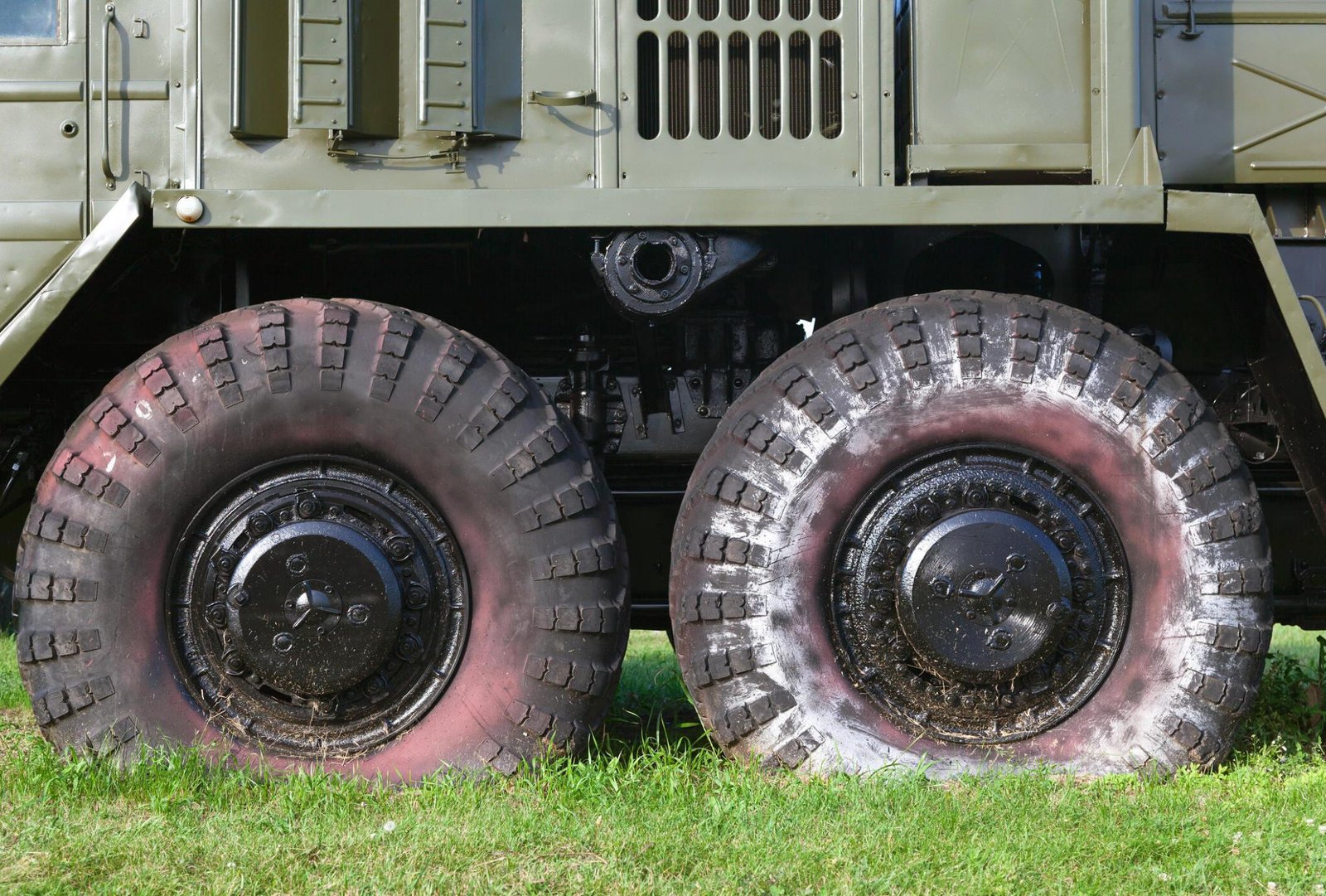
Challenges and Future Trends
The landscape of military operations is constantly evolving, presenting new challenges and opportunities for the armed forces. In this article, we explore the challenges military tire technology faces in adapting to changing battlefield conditions and examine the promising future developments in this field.
Adapting to Changing Battlefield Conditions
- Terrain Diversity: Military operations often occur in diverse terrains, from deserts to jungles and urban environments to mountains. Adapting to these varied conditions demands tires that can provide traction and durability across all terrains.
- Improvised Explosive Devices (IEDs): The prevalence of IEDs in modern conflicts poses a significant threat to military vehicles. Tire technology must evolve to enhance resistance to explosive damage.
- Urban Warfare: Urban warfare scenarios require tires that can navigate through rubble, debris, and potentially contaminated terrain while maintaining maneuverability and minimizing damage.
- Climate Extremes: Military vehicles may operate in extreme weather conditions, from cold to sweltering heat. Tires must remain reliable and safe in such environments.
- Stealth and Low Noise: Reducing the noise generated by military vehicles is a growing concern for stealth operations. Future tire developments may focus on noise reduction without sacrificing performance.
Future Developments in Military Tire Technology
- Innovative Tires: Integrating sensors and advanced monitoring systems into military tires will allow real-time monitoring of tire conditions, pressure, and temperature, enabling predictive maintenance and reducing the risk of unexpected failures.
- Improved Puncture Resistance: Future military tires may incorporate even more advanced puncture-resistant technologies, surpassing self-sealing capabilities to enhance durability and safety in hostile environments.
- Advanced Materials: Developing lighter but more robust materials like carbon composites will improve tire performance without adding excessive weight to military vehicles.
- Autonomous Vehicles: As autonomous military vehicles become more prevalent, tire technology will need to adapt to the unique requirements of unmanned platforms, ensuring they can operate without human intervention in complex terrains.
- Energy Efficiency: Research into low-rolling-resistance tire compounds and designs will improve fuel efficiency and reduce environmental impact, aligning with sustainability goals.
- 3D-Printed Tires: Innovations in 3D printing technology may enable the rapid production of customized tires for specific missions, reducing lead times and enhancing adaptability.
- Nanostructured Materials: Using nanotechnology in tire manufacturing could produce tires with exceptional strength, self-repairing capabilities, and improved performance in extreme conditions.
Conclusion & Recommendations
This comprehensive exploration of the role of tires in military operations explains the pivotal significance of these unassuming yet essential components in ensuring the mobility, safety, and effectiveness of armed forces. From tire selection criteria to innovations and challenges, we have seen how the right choice of tires can make the difference between mission success and failure.
Throughout this journey, we have learned that military tire selection is a meticulous process influenced by terrain versatility, load-bearing capacity, durability, and adaptability to changing battlefield conditions. It also explored the contributions of common tire brands like Goodyear, Michelin, and BFGoodrich, who have consistently provided military forces with reliable and high-performance tire solutions.
Moreover, the article delved into the innovations shaping the future of military tire technology. Self-sealing tires have emerged as a game-changer in puncture resistance, while advanced tread patterns enhance traction in diverse environments. These innovations ensure military vehicles can navigate challenging terrains and hostile conditions with greater confidence and durability.
Maintenance and proper care of military tires have been highlighted as critical to extending their lifespan and reducing operational downtime. By following tire care guidelines, military organizations can maximize the performance of their fleets while minimizing costs and ensuring readiness.
Lastly, we’ve discussed the challenges military tire technology faces in adapting to changing battlefield conditions, from varying terrains to the threats posed by IEDs. However, with ongoing advancements in innovative tires, puncture resistance, materials, and sustainability efforts, the future of military tire technology holds promising solutions to overcome these challenges and further enhance military success.
Recommendations for Military Forces
In light of these findings, here are some recommendations for military forces:
- Prioritize Tire Maintenance: Establish and rigorously follow a proactive tire maintenance schedule to ensure that tires remain in optimal condition, contributing to operational readiness.
- Embrace Innovations: Stay informed about the latest advancements in military tire technology, and consider adopting self-sealing tires, advanced tread patterns, and other innovations to enhance performance and safety.
- Invest Wisely: Choose tire brands with a proven track record of reliability and performance in military applications, ensuring that you invest in high-quality, durable tires.
- Adapt to Changing Conditions: Continuously assess and adapt tire selection to match the specific requirements of changing battlefield conditions and terrains.
- Support Research and Development: Encourage and support research and development efforts in military tire technology to drive future innovations that address evolving challenges.
Tires are the unsung heroes of military mobility, playing a central role in ensuring the success of military operations. By prioritizing tire care, embracing innovations, and making informed choices, military forces can enhance their mobility, safety, and overall effectiveness on the battlefield.
As you recognize the critical importance of tires in military operations, we invite you to take action and equip your vehicles with the best tires available. Visit Giga Tires to explore a wide range of high-quality, military-grade tires that meet the rigorous demands of modern warfare. Make the smart choice for your military fleet and ensure you are well-prepared for today’s challenges and tomorrow’s innovations. Your success on the battlefield starts with the right tires.
FAQs
What types of tires does the U.S. military commonly use?
The U.S. military primarily uses all-terrain, mud-terrain, and run-flat tires, depending on the mission and terrain.
Why are military tires different from civilian tires?
Military tires are designed for durability, puncture resistance, and versatility to handle various terrains and conditions, making them more robust than civilian tires.
Which tire brands are trusted by the U.S. military?
The U.S. military trusts Goodyear, Michelin, and BFGoodrich tire brands for their reliability and performance.
What is the Importance of tire maintenance in the military?
Proper tire maintenance is crucial to ensure military vehicles remain mobile and operational. Regular inspections, reasonable inflation, and timely repairs are essential practices.
Does the military commonly use self-sealing tires?
Self-sealing tires are increasingly employed in military operations because they seal punctures automatically, reducing downtime and enhancing safety.
How do military tires perform in extreme weather conditions?
Military tires are designed to perform in various weather conditions, from extreme cold to sweltering heat, ensuring mobility regardless of the environment.
Do military vehicles use specialized tires for off-road missions?
Military vehicles often use specialized off-road tires, such as mud-terrain tires, to navigate challenging off-road terrains effectively.
What innovations can we expect in military tire technology?
Future innovations in military tire technology may include innovative tires with monitoring systems, improved puncture resistance, advanced materials, and sustainability efforts to reduce environmental impact.




